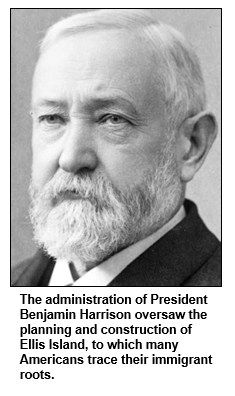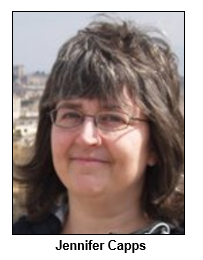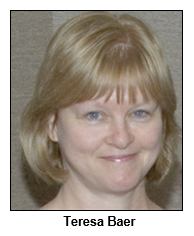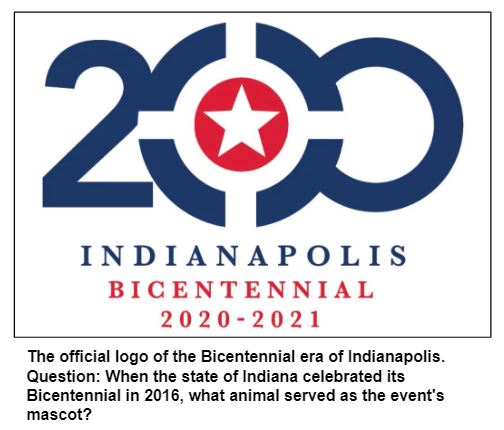
Saturdays, noon to 1 p.m. ET on WICR 88.7 FM.
Or stream audio live from anywhere on WICR Online!
You can listen to recent shows by clicking the podcast links below, or check out our extensive archive of past shows available as podcasts.
June 6, 2020
Early malaria epidemic in Indy, plus past visions for city's future

We also will look back on the city's history at various proposals for its improvement, including some ideas that fizzled or needed to be reworked.
A Bicentennial era (2020-2021) launch had been planned for early June that involved a major public community gathering on Monument Circle. Instead, as our guest Deputy Mayor Jeff Bennett explains, civic leaders have been conferring to come up with a celebratory kickoff scheduled for June 28 that can happen amid COVID-era public health guidelines. Jeff will share more details during our show.
And listeners are invited to call in to share their visions and dreams for Indianapolis during the next 200 years. The phone number of the WICR-FM studio is 317-788-3314; Nelson will open the phone lines early during the show.
The coronavirus pandemic certainly isn't the first public health crisis Indianapolis has faced. During the summer of 1821, the new city confronted a devastating malaria epidemic that killed 72 men, women and children, according to Indianapolis: The Story of a City by Edward A. Leary. Dozens of terrified residents packed up and left.

Despite that inauspicious start, the city endured. During the next 200 years, visionaries proposed various plans for Indianapolis and its historic sites. Our guest Jeff Bennett will discuss some plans involving transformations for City Market at E. Market and N. Alabama streets that never unfolded.
Nelson and Jeff also will discuss Lockerbie Fair, a proposal first suggested in the late 1950s by city planners to transform the Lockerbie Square neighborhood into a historic "theme park" with costumed reenactors. The concept gained steam as interest in history increased with the buildup to the U.S. Bicentennial in 1976.
However, the Lockerbie Fair plan drew strenuous protests from historic preservationists, who wanted to protect Lockerbie as a residential neighborhood and were restoring its 19th century cottages. Opposition from Indiana Landmarks (then the Historic Landmarks Foundation of Indiana) was a key factor in causing the Lockerbie Fair concept to be scuttled.
The proposal in 1958 from the Metropolitan Planning Commission that advocated for the creation of Lockerbie Fair also suggested demolishing City Market and historic Union Station, replacing the latter with a "modern heliport and transportation hub." The planners predicted that city residents soon would be relying on helicopters for transportation to Broad Ripple and other neighborhoods beyond downtown's Mile Square.
The planners advocated for demolition of City Market so it could be replaced "with a cube-like structure ... which would give a festive atmosphere for the market shopper."
That didn't happen at the site, which was first envisioned as the location for a food market when Scottish-born surveyor Alexander Ralston laid out Indianapolis in 1821. Initially, an outdoor market flourished there. The current City Market building, which was constructed in 1886, has been renovated several times; a substantial redevelopment in the 1970s included construction of its two wings.
Both City Market and Union Station, which was also built in the 1880s, have been placed on the National Register of Historic Places. An attempt in the mid-1980s to convert Union Station into a "festival marketplace" of boutique shops and restaurants failed after a few years. Today, Crowne Plaza leases most of the historic train station from the city for use as a hotel, banquet hall and conference center.
Earlier in his career, our guest Deputy Mayor Jeff Bennett worked for Indiana Landmarks. He also was our guest last January for a show about how the Centennial of Indianapolis was celebrated in 1920 as well as the 150th birthday festivities in the early 1970s.
Roadtrip: Hoosier Hill near Richmond
Guest Roadtripper and retired bookstore own Kathleen Angelone has always been known to scale mountains - both literally and figuratively.
And while Indiana doesn't offer any mountains of the rock-and-dirt variety, we do enjoy the topological blessings of some fabulous hills - just ask anyone who has ever hiked in Brown County or biked the Hilly Hundred through Morgan-Monroe State Forest.
But at least in one respect, those hills pale in comparison to Kathleen's destination for this Roadtrip: Hoosier Hill, located next to a corn field north of Richmond in Wayne County. At 1257 feet in elevation, it's the highest point in Indiana.
The top of Hoosier Hill welcomes visitors with a clearing in the woods, which Kathleen tells us is a great spot for a picnic. Thanks to the work of a local Eagle Scout, the area boasts a campfire pit, a picnic table, signage and a notebook for visitors to leave their mark. The spot is maintained by the Highpointers Foundation, which supports public and private efforts to preserve the integrity of and safe access to the highest points in each of the fifty states.
And while the site doesn't offer much in the way of views, you will definitely reach new heights on this exciting Roadtrip!
History Mystery
In January, Indianapolis civic leaders unveiled the official logo for the celebrations of the city's Bicentennial era. The logo chosen by the Indianapolis Bicentennial Commission was designed by Mandy Welsh. It is blue, red and white, with "200" in large blue numerals; one of the zeroes encircles a single star, with a design that salutes the city's official flag.
When the state of Indiana turned 200 in 2016, a mascot based on an animal was widely displayed. Fiberglass statues of the animal mascot were placed in all 92 counties in a project endorsed by the Indiana Bicentennial Commission. Life-sized replicas of the mascot also appeared at the Indiana State Fair and other major events.
Question: What animal inspired the state's Bicentennial mascot?
The call-in number is (317) 788-3314. Please do not call in to the show until you hear Nelson pose the question on the air, and please do not try to win the prize if you have won any other prize on WICR during the last two months. You must be willing to give your name and address to our engineer and be willing to be placed on the air.
The prizes this week are two tickets to the Seiberling Mansion, which opens on June 14th, and a gift certificate to Windmill Grill, which is open. All are in Kokomo, courtesy of Howard County Historical Society and Peggy Hollingsworth.
By the way, if your organization would like to offer History Mystery prizes, email admin@hoosierhistorylive.org Good prizes are ideally vouchers or gift certificates that can be sent by postal service mail in a standard business envelope.
Nelson Price, host and historian
Molly Head, producer/general manager, (317) 927-9101
Mick Armbruster, associate producer
Cheryl Lamb, administrative manager
Richard Sullivan, senior tech consultant
Pam Fraizer, graphic designer
Garry Chilluffo, consultant
Please tell our sponsors that you appreciate their support!

 For organizational sponsorship, which includes logos, links, and voiced credits in the show and in podcasts, email support@hoosierhistorylive.org, or call (317) 927-9101 for information. Our podcast listens are increasing at a rate of 17% a month and we are being distributed on Indiana Memory and the National Digital Public Library. As we have always believed, the internet distribution of Hoosier History Live is taking us to the top! Thanks also to Visit Indy, Fraizer Designs, WICR-FM, Henri Pensis, Aaron Duvall, Kielynn Tally, Justin Clark, and many other individuals and organizations.
For organizational sponsorship, which includes logos, links, and voiced credits in the show and in podcasts, email support@hoosierhistorylive.org, or call (317) 927-9101 for information. Our podcast listens are increasing at a rate of 17% a month and we are being distributed on Indiana Memory and the National Digital Public Library. As we have always believed, the internet distribution of Hoosier History Live is taking us to the top! Thanks also to Visit Indy, Fraizer Designs, WICR-FM, Henri Pensis, Aaron Duvall, Kielynn Tally, Justin Clark, and many other individuals and organizations.
Thank you!
We'd like to thank the following recent, new and renewal contributors whose donations help make this show possible!
- Carl and Kathleen Widland
- Carol Bacon
- Rachel Perry
- Tom Swenson
- Dr. James Madison
- Stacia Gorge
- Dr. Geoffrey Golembiewski
- Clarke Kahlo
- Jim and Nancy Johnson
- Marion Wolen
- Robin Winston
- Peggy Hollingsworth
- Kathleen Angelone
- Jill Lough Chambers
- Jinsie Bingham
June 13, 2020 - coming up
Ellis Island, immigration and Indiana: encore

The receiving station for aspiring Americans now celebrated as an iconic aspect of our shared history opened on Ellis Island in 1892 during the administration of President Benjamin Harrison, so the only president elected from Indiana oversaw the lead-up to its debut. According to some estimates, about 22 million immigrants passed through Ellis Island during the years between 1892 and 1924, its peak period as the country's "door." (Ellis Island remained open as a receiving center until 1954, but during its final 30 years, limitations on immigration - and the creation of other points of entry - meant that far fewer immigrants were handled at the island.)
Not only will we explore the challenges that confronted all involved during the early Ellis Island years - immigrants often endured shockingly crude medical exams - we also will look at the waves of ethnic heritage groups that came to Indiana from the 1890s through the mid-1920s. Nelson's studio guests are:
- Jennifer Capps, the veteran curator at the Benjamin Harrison Presidential Site in Indianapolis. Because Ellis Island opened under the Harrison administration - he was elected president in 1888 and left office in early 1893 - Jennifer has researched several aspects of the planning for the major immigrant processing center. According to Ellis Island: Gateway to the American Dream (Barnes & Noble Books, 1998), "the federal government assumed responsibilities for immigration and built Ellis Island" after corruption scandals with its predecessor, Castle Garden, which was run by New York officials.
- And Teresa Baer, managing editor of the Indiana Historical Society Press. Teresa is the author of Indianapolis: A City of Immigrants (2012) and Finding Indiana Ancestors (2007), both published by the IHS Press; she also is the editor of The Hoosier Genealogists: Connections, the society's family history magazine.

During our show, we will frame the early decades of immigration through Ellis Island by describing the waves of ethnic immigration to Indiana that preceded it, including early Irish, German, English and Scottish arrivals.
Between the 1890s and the start of World War I in 1914, many waves of immigrants came from what then was the Austro-Hungarian Empire; today, after more than a century of geopolitical shifts and cartographic reconfiguration, their countries of ancestral origin are the modern nations of Hungary, Austria, Ukraine, Belarus, Poland and Slovakia.

Italian immigration during the late 19th and early 20th centuries included hundreds of marble-cutters who settled in southern Indiana, including the town of Bedford, to work as limestone carvers. Hoosier History Live explored this aspect of Italian immigration in 2010. Other shows that explored immigration to Indiana during the heyday of Ellis Island include our programs about Latvian and Lithuanian heritage in 2016 and Russian immigration in 2014.
Our guest Jennifer Capps will share details about crude eye examinations - with unsterilized equipment - that were imposed on immigrants during the early decades of Ellis Island as a receiving station. Federal laws called for the rejection of those who showed indications of suffering from a "loathsome or contagious disease," but the reality was that many immigrants were turned away if they displayed any hint of illness or physical impairment, according to Ellis Island Interviews: In Their Own Words (Checkmark Books, 1997).
A fire at Ellis Island burned the first receiving station to the ground in June 1897, more than four years after Harrison's presidency ended. By then, more than 1.64 million immigrants had been processed. The fire destroyed immigrant records from 1855 to 1897, including those from Castle Garden. About 200 immigrants were on the island at the time of the inferno, but all were safely evacuated. Construction began immediately of new buildings made of materials deemed fireproof.
Some history facts:
- The first site proposed for the immigrant processing station was Bedloe Island (now called Liberty Island), where construction on the Statue of Liberty had been completed just a few years prior, in 1886. Because of public opposition to that proposal, nearby Ellis Island was chosen instead.
- The first official to climb to the top of the Statue of Liberty was Harrison's vice president, Levi P. Morton.
- As recently as 1997, more than 40 percent of the U.S. population could "trace their roots to an ancestor who came through Ellis Island," according to the Statue of Liberty - Ellis Island Foundation.
© 2020 Hoosier History Live. All rights reserved.
|








